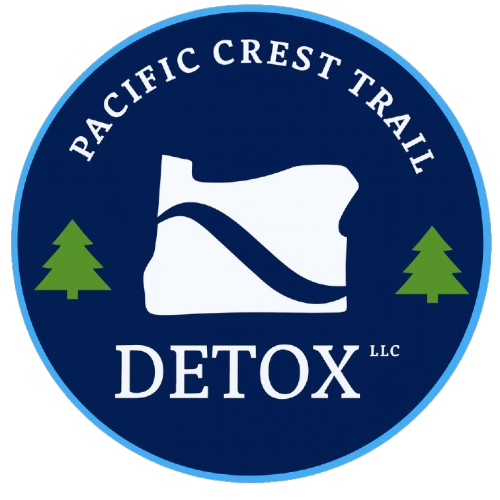The purpose of these programs is to stabilize symptoms, reduce harmful behaviors, and strengthen emotional resilience in a safe and supportive setting.
Below are the main differences between PHP and other levels of care:
This level of care is especially appropriate for individuals who:
On the other hand, partial hospitalization offers a high level of clinical care during the day while allowing clients to return home in the evenings.
Partial hospitalization programs are not designed for individuals in acute crises. Instead, these programs are best suited for:
In contrast, a PHP is designed for individuals who require daily care to ensure they stay on track in their recovery. These individuals may be in the midst of their treatment journey and need more intensive support than what an IOP can provide.
Transitioning between levels of care is a normal part of the recovery journey. These decisions are made through thoughtful collaboration between the care team and the client based on:
These transitions are not indicators of success or setbacks. Instead, they reflect a responsive approach to delivering the most appropriate care at the right time.
A person may step down from inpatient care to a PHP once acute symptoms are managed, and there is no longer a need for 24-hour monitoring. This transition allows for continued therapeutic work in a structured environment while encouraging reintegration into daily life.
Conversely, a short-term return to inpatient care may be necessary to ensure safety and stability. This may occur if someone in a PHP begins to experience:
Likewise, a transition from PHP to IOP typically occurs when an individual demonstrates:
At this stage, the focus shifts to reinforcing those skills in real-life situations while maintaining therapeutic support in a less intensive format.
At the heart of every PHP is a well-rounded treatment approach that supports both clinical recovery and daily functioning.
Below are the essential elements that form the foundation of a successful PHP:
These medications are carefully chosen based on each individual’s clinical needs. This tailored approach leads to more effective treatment and better long-term recovery outcomes.
For addiction treatment, medications such as methadone, buprenorphine, and naltrexone are commonly used.
In mental health treatment, partial hospitalization treatment centers frequently administer medications to manage a range of conditions.
Although detoxification is not the primary focus of most partial hospitalization treatment centers, many partial hospitalization programs include medical monitoring services to manage withdrawal and reduce the risk of medical complications. This added support can be vital as the body begins to heal.
Regular check-ins with medical staff typically assess:
This ongoing monitoring helps keep clients safe and supported every step of the way.
Daily check-ins with providers and registered nurses support medication adherence, and help identify emerging patterns of substance use behavior.
If signs of relapse or substance cravings become apparent, medical staff and therapists can:
This ensures that individuals receive the right level of care at the right time to maintain their recovery.
CBT focuses on identifying and restructuring unhelpful thought patterns that contribute to emotional distress, addiction, and destructive behaviors.
Clients work with therapists to explore how their thoughts influence their feelings and actions, particularly in response to:
Through guided sessions, individuals learn to challenge cognitive distortions, such as black-and-white thinking, catastrophizing, or self-blame, and replace them with more balanced perspectives.
Partial hospitalization treatment centers also use CBT to equip clients with essential, real-world skills that support lasting recovery.
Partial hospitalization treatment centers, like Pacific Crest Trail Detox, will often use DBT to help patients process difficult emotions without resorting to self-destructive behaviors or substance use.
The therapy focuses on four primary areas, including:
What sets DBT apart is its emphasis on acceptance and change. Individuals are encouraged to accept their current reality while simultaneously working toward positive transformation.
This dual focus allows individuals to manage intense emotional reactions and reduce impulsive behaviors, both of which are common in addiction and mental health challenges.
Partial hospitalization treatment centers will often use MI to help individuals explore and resolve internal conflicts related to behavior change. Instead of confronting resistance, the therapy encourages intrinsic motivation by reinforcing autonomy and personal choice.
In PHP care, MI is often used during the early stages of treatment to enhance engagement; therapists guide individuals toward change by:
Partial hospitalization treatment centers increasingly recognize the role of trauma in both addiction and mental health conditions.
Individuals entering PHPs often carry unresolved trauma that affects:
A trauma-informed approach ensures that therapeutic interactions are conducted with sensitivity, awareness, and compassion.
Trauma-informed care explores the root causes of emotional pain and maladaptive behaviors. Therapists help clients identify how their present-day struggles are shaped by past experiences, such as:
Through this process, clients gain insight, validation, and the tools needed to reclaim their lives.
Trauma-informed care is not a specific modality but a guiding framework that informs every aspect of care provided by partial hospitalization treatment centers.
The goal is to create an environment where clients feel seen, heard, and respected.
The PHP at Pacific Crest Trail Detox (PCTD) is thoughtfully designed for individuals navigating the challenges of SUD.
We utilize a range of modalities to help individuals reconnect with themselves in ways that traditional methods may not reach.
Art therapy allows individuals to explore and express deep emotions that may be difficult to articulate through traditional talk therapy.
Guided by trained therapists, participants engage in creative projects such as:
The act of creating art offers a nonverbal outlet for self-discovery and emotional release. This makes it especially beneficial for those who struggle with expressing vulnerability in verbal settings.
Meditation promotes a sense of calm, grounding, and clarity by encouraging participants to:
Chronic stress is a major contributor to substance use and relapse. To address this, partial hospitalization treatment at PCTD includes structured exercises designed to:
These activities may involve light movement, breath work, progressive muscle relaxation, or therapeutic stretching. The goal is to encourage a stronger mind-body connection and reduce emotional overwhelm.
Group therapy at PCTD offers clients the chance to engage in compassionate dialogue with others facing similar struggles. Whether discussing substance use patterns or emotional triggers, the group dynamic fosters a sense of mutual understanding that is often missing in the isolation of addiction.
Facilitated by skilled clinicians, group sessions are structured to promote accountability and healthy communication, and clients learn to:
Getting started with PHP at PCTD is a straightforward process.
Here’s what you can expect:
The first step typically includes a brief pre-screening conversation conducted over the phone or in person. This initial contact helps determine whether partial hospitalization is the most suitable level of care based on the individual’s current condition and support system.
During this initial interaction, the admissions team gathers basic information regarding:
Following the pre-screening, a comprehensive clinical assessment is scheduled.
This thorough evaluation helps our team gather vital information about:
This information is essential for determining eligibility for the PHP and crafting a tailored treatment plan that addresses each person’s unique challenges and goals.
Life in the PHP at PCTD follows a consistent routine designed to support recovery and personal development. Clients can expect a full day of programming, typically spanning several hours.
Through daily engagement in treatment, we help clients:
Every moment in the program is a chance to grow, heal, and move closer to a life free from addiction.
Together, we’ll map out a path that feels right for your recovery.






